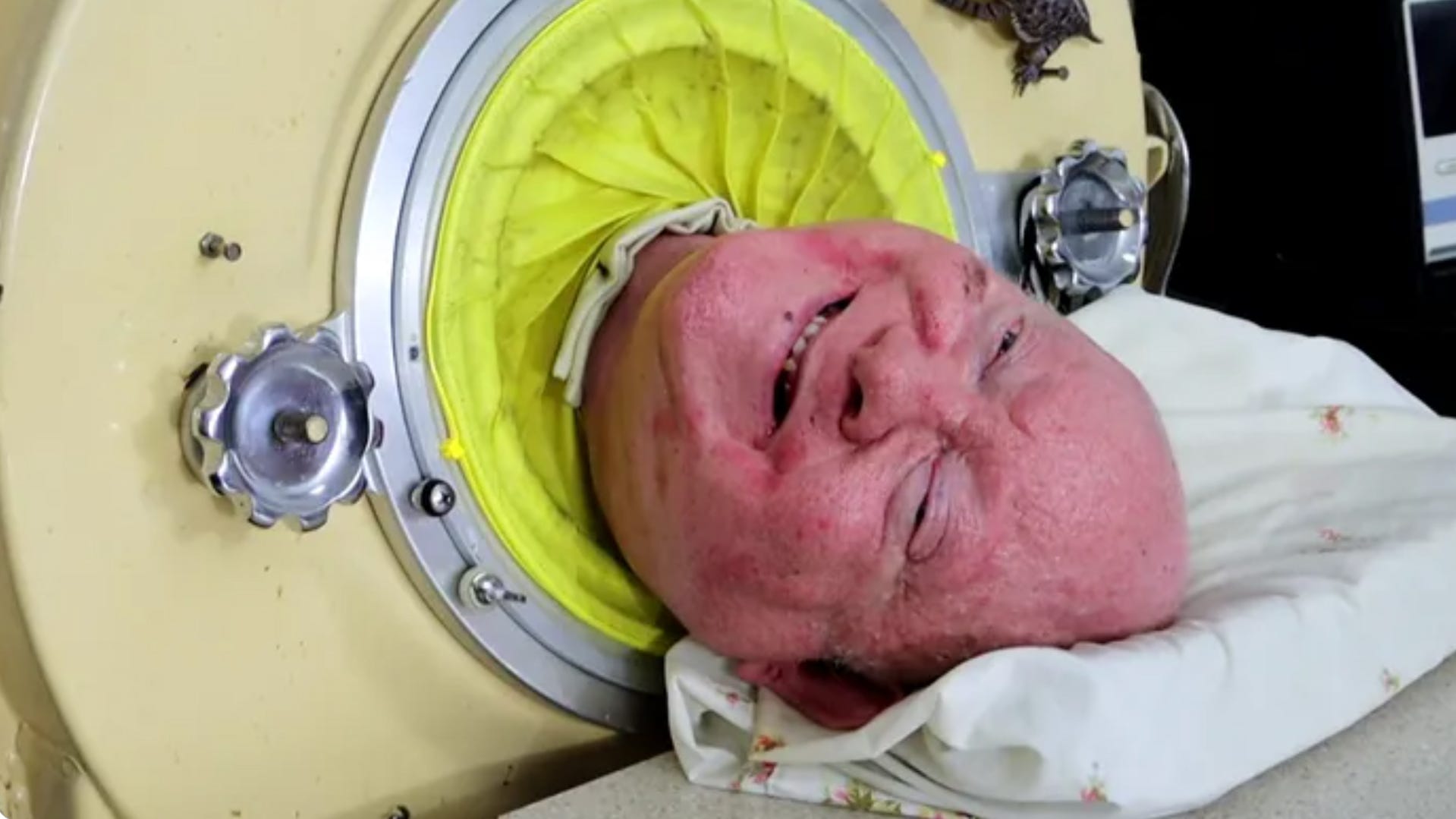
A man living in an iron lung after contracting polio in 1952 dies
Paul Alexander had been living in an iron lung since 1952 when he contracted polio as a young child.
In the mid-20th century, common areas such as swimming pools and sporting events became a source of anxiety for parents who feared the rampant spread of the polio virus. Their concerns were not unfounded. Polio is a debilitating disease that invades the body’s nervous system, and before the invention of the polio vaccine, it claimed the lives of hundreds of thousands of people worldwide every year.
Conceptualized in the late 1920s, the iron lung was notably the first line of defense against polio during the epidemics that occurred between 1948 and 1955. The device saved the lives of thousands of patients (mostly children) whose lungs became paralyzed or weakened by polio, allowing them to breathe, according to Harvard Medical School.
The iron lung has disappeared from modern medicine, but its legacy remains. This is why the device has fundamentally changed the way healthcare providers today interact with patients dealing with many different types of life-threatening conditions.
What is the iron lung?
The iron lung was a large, cylindrical unit (up to six feet long) that acted as a ventilator to help patients who could not breathe on their own. Patients lay down with their heads outside the room and the device wrapped around their bodies, according to the U.S. Centers for Disease Control and Prevention. The iron lung used negative pressure ventilation (NPV), which “mimics natural breathing by creating negative pressure around the chest, causing the lungs to expand and draw in air,” explains Dr. Jim Mendez, a clinical associate professor of nursing at Villanova University. .
For many polio patients, the iron lung was a bridge to survival, says Dr. Daniel Salerno, a pulmonologist and critical care physician and faculty fellow at Temple University. Patients were often housed together in large wards. While many people relied on the iron lung for only one to two weeks before recovering, about one in two hundred polio patients experienced a more permanent paralysis of their breathing muscles. These patients depended on the iron lung for years, and possibly for the rest of their lives, Salerno says.
Are iron lungs still used today?
After 1955, when the first polio vaccine was approved in the U.S., polio cases declined and the need for the iron lung quickly diminished, Mendez says.
Paul Alexander, one of the last surviving people in America to live in an iron lung, died in early 2024 at the age of 78. After contracting polio as a child in 1952, Alexander was dependent on the iron lung his entire life. Despite the enormous physical challenges he faced, Alexander completed further education, practiced law for thirty years, and wrote an autobiography. He shared his remarkable story on TikTok, educating followers about his life in the iron lung and bringing attention to millions of children around the world who are still not vaccinated against polio.
Today, efforts to eradicate polio are global. Since 1988, cases of wild poliovirus have declined by more than 99%, but the disease is still considered endemic in two countries, Pakistan and Afghanistan. International agencies have made remarkable progress in administering polio vaccinations, and according to the World Health Organization, more than 20 million people who would have been paralyzed by polio can walk today.
What replaced the iron lung?
At the time of its invention, the iron lung was widely regarded as an advanced mechanical ventilator. Despite its limitations, “the device spurred innovations in ventilators and critical care, ultimately leading to the development of positive pressure ventilators and other life support systems used in intensive care units today,” Mendez says.
While the iron lung used NPV to facilitate airflow in patients, today’s ventilators use positive pressure ventilation (PPV), Mendez notes. The iron lung was less invasive than modern technology, but would be much less effective in treating acute or respiratory conditions requiring high-pressure support, such as pneumonia, COVID-19 and emphysema, he notes.
“Additionally, (the iron lung) emphasized the importance of managing respiratory failure, which has become a cornerstone of critical care medicine,” Mendez says. “In a sense, these iron lung units were the precursor to medical ICUs,” Salerno adds. ICUs can care for patients dealing with everything from gastrointestinal bleeding to kidney failure, but their origins are still closely tied to pulmonary medicine, he says.